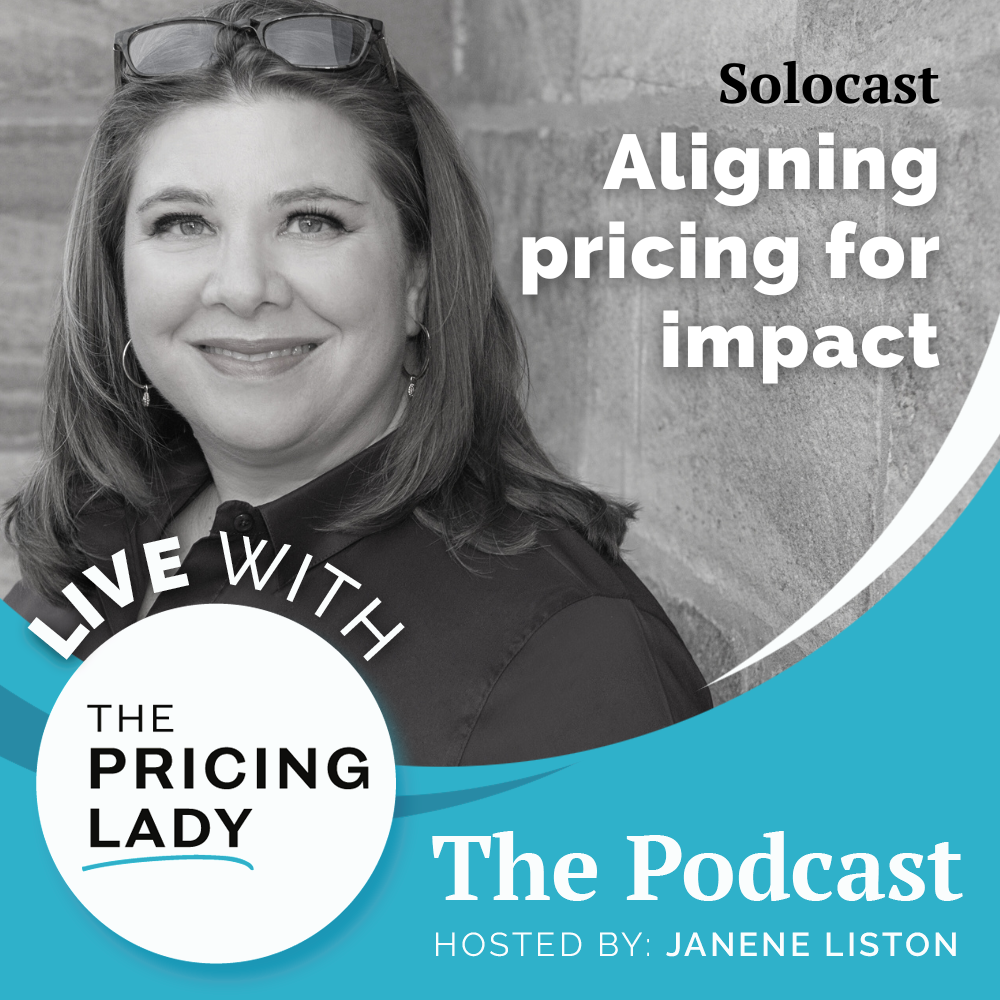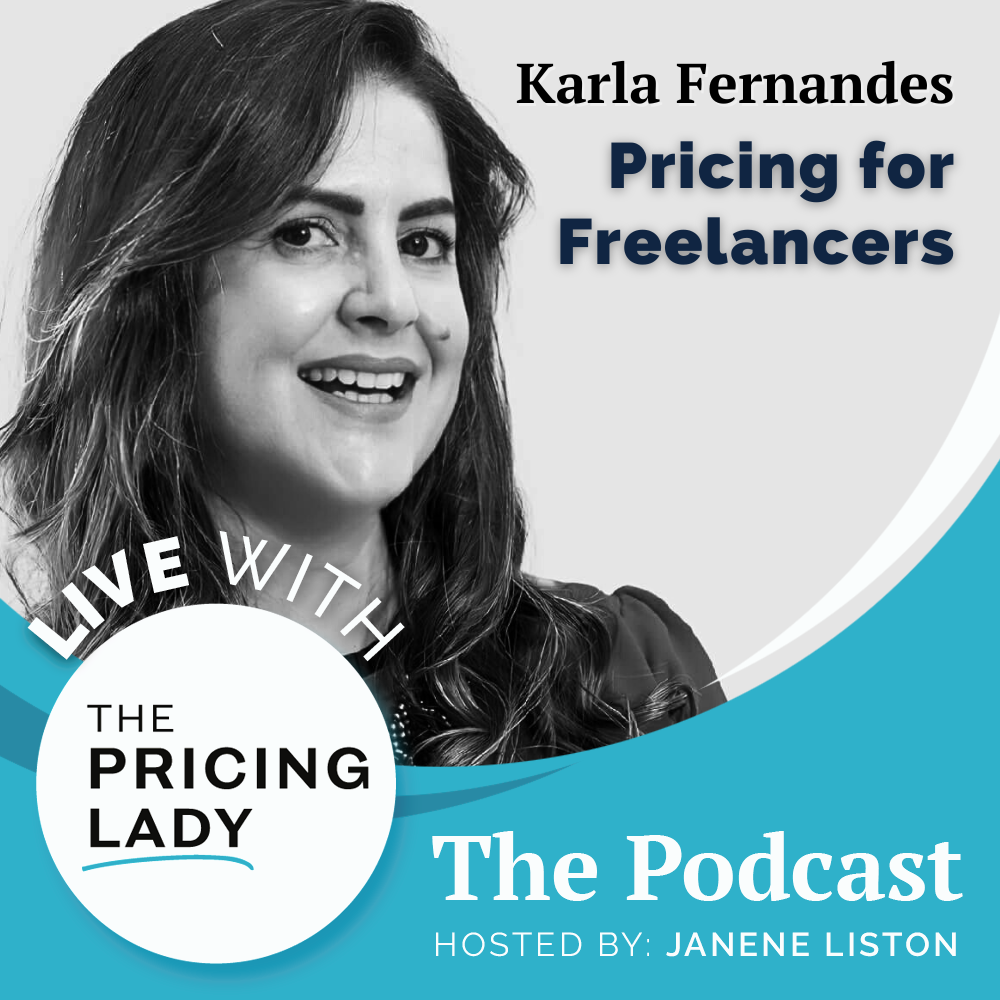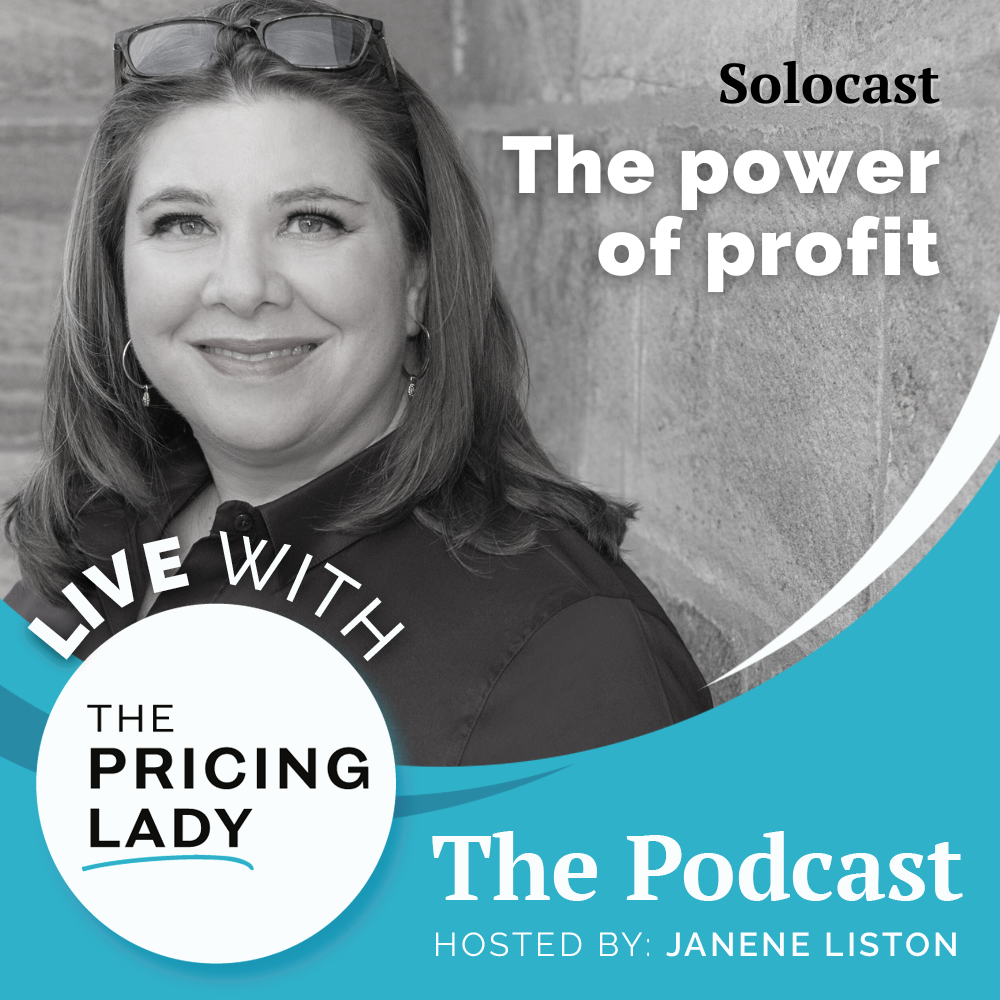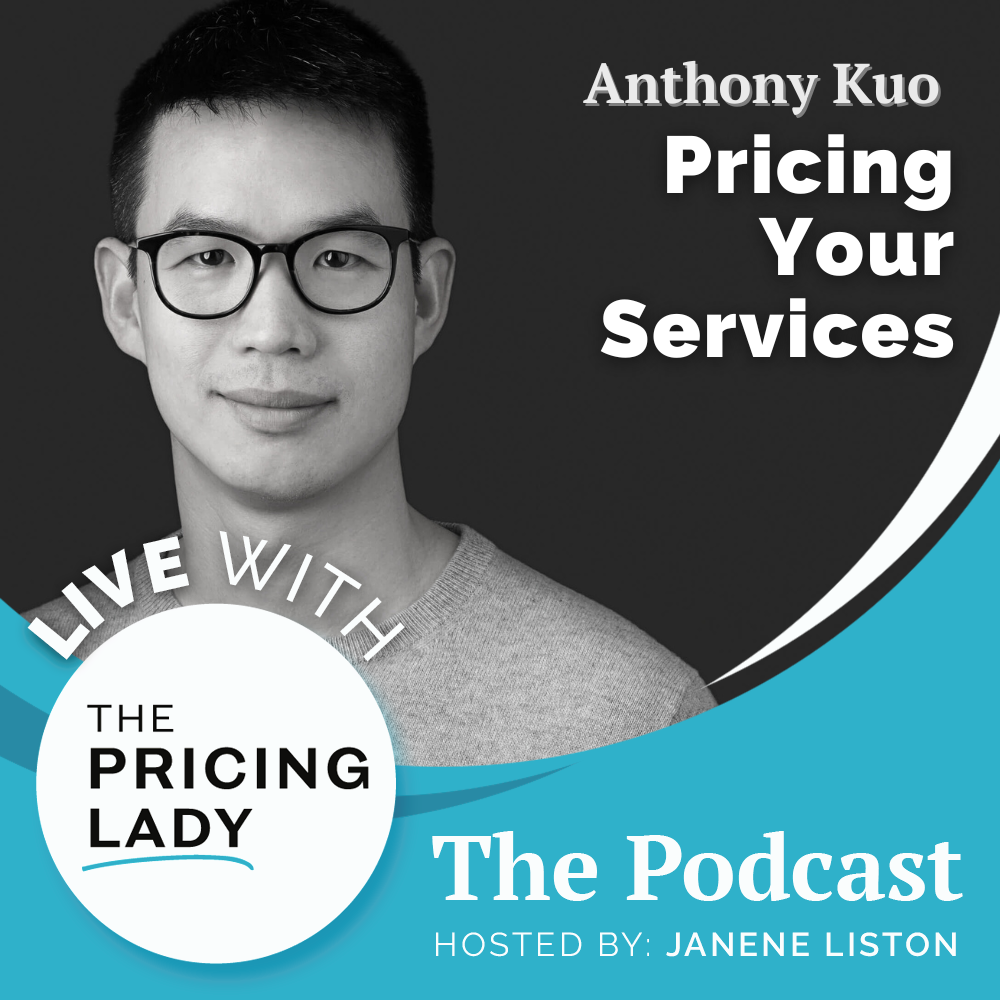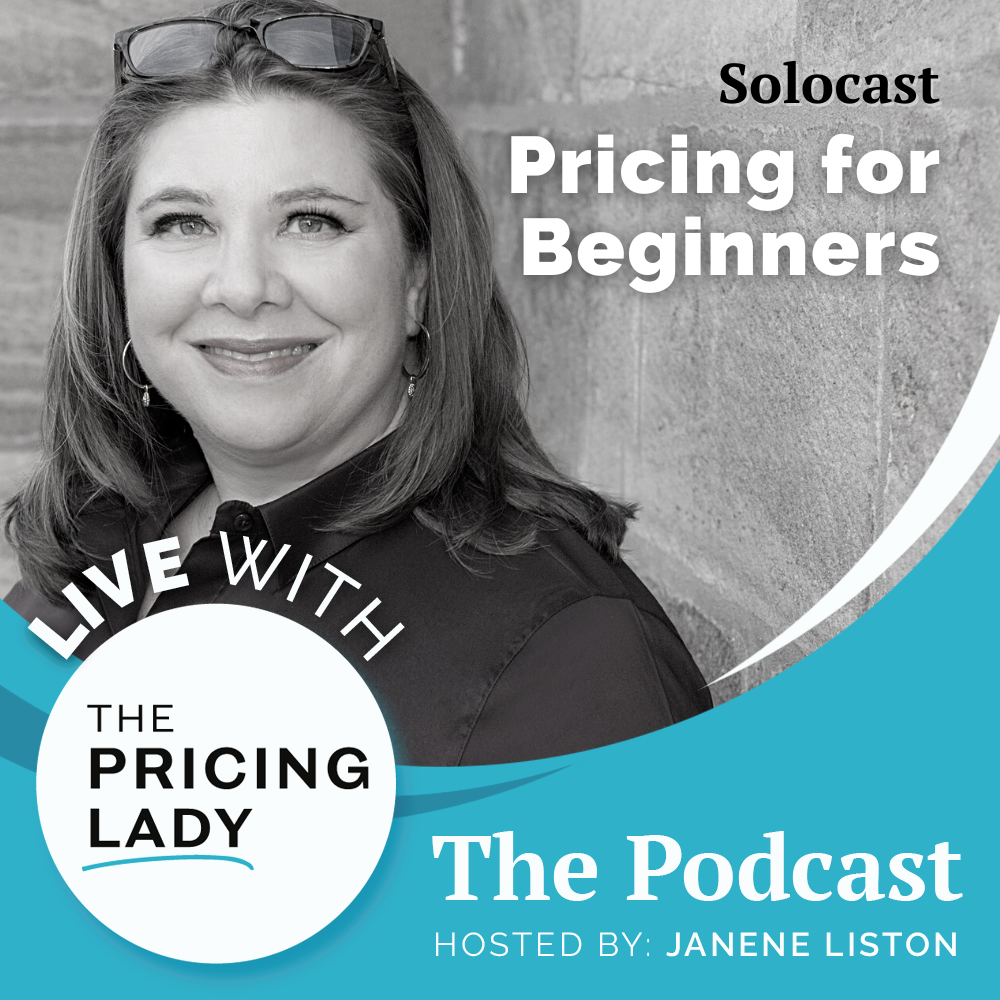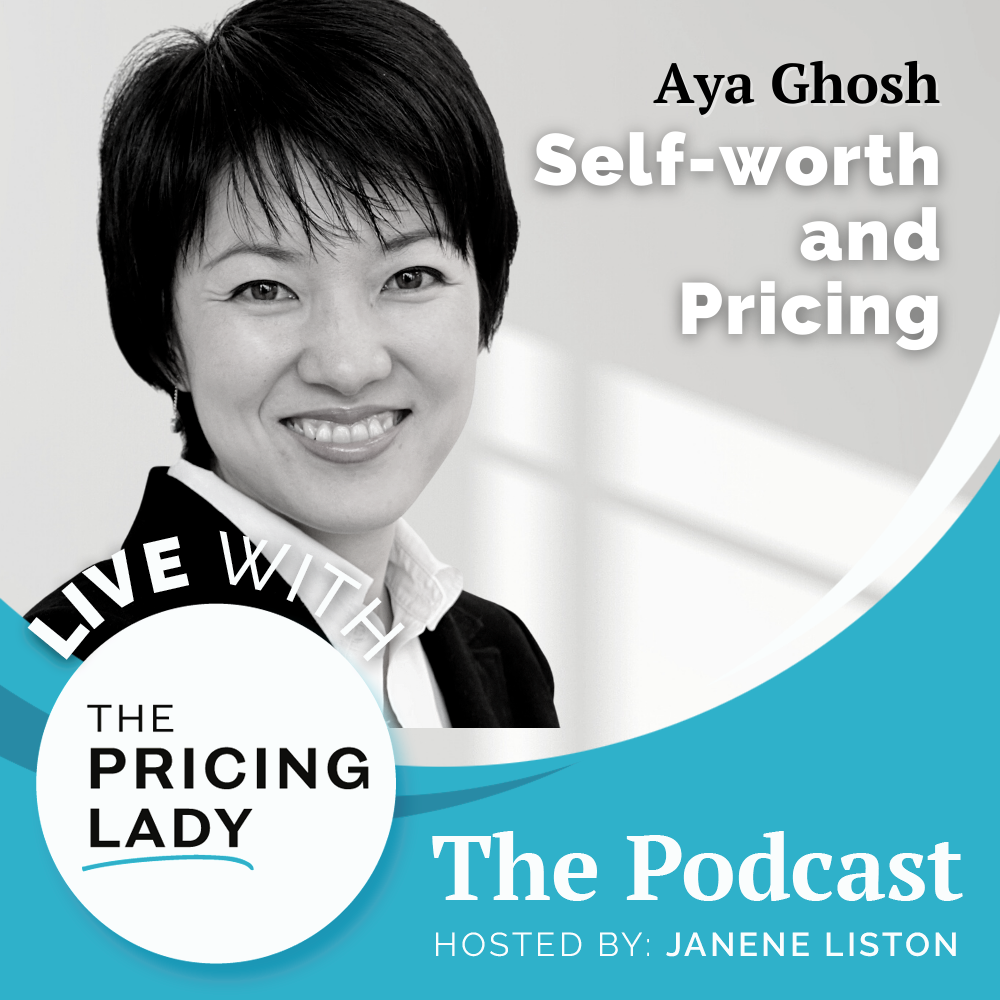Have you ever looked at a bottle of wine and thought “Whoa. Ouch that’s pretty pricey!”
Most of us have.
Of course there are wines at all price levels but what really goes into the pricing of your favorite wine? That’s what I wanted to explore in this episode as we take a look at wine and spirits pricing.
One of the things that I love about what I do is that through helping businesses with their pricing I’ve been able to learn a lot about many different industries and about what goes into the making of that product, software or service. I enjoy learning new things and understanding why or how they work. I’m that annoying person at the eye doctor who asks what all the different machines do. Ha!
And when it comes to understanding what price to set for something, understanding what’s behind the business is an important part of the process. And while cost to produce isn’t the only driver of price understanding what goes into production at least at a high level is pretty important to your pricing.
Both as a business owner and as a consumer a big part of the value you get from something that you buy is related to what goes into it. And having worked in the agricultural industry for a while I had the opportunity to visit vineyards and understand wine production more. I’m not an expert by any means but I do have a much bigger appreciation.
So I ask questions like…
What goes into the pricing of a bottle of wine?
What are the differences between the most and the least expensive?
How does production or distribution impact the pricing?
You’ve probably wondered about it yourself. And if you’re a startup or business that has to set prices for wine then the biggest question you’ve probably got is “How do I find the right price?”
You’re in luck I’ve got just the lady for you.
In This Episode
This time I’ve brought on a guest who is an expert in all things wine and spirits-related. Ruchira Neotia, owner of Neo Margarita Ltd., is a London-based drinks professional with a passion for the art of crafting exquisite drink experiences – across wine, spirits and saké. At the heart of Ruchira’s expertise is her talent for creating harmonious connections between food and beverages. As a consultant, she excels at developing optimized drink lists for restaurants that perfectly complement the culinary offerings, enhancing the overall dining experience.
She comes on the show to help us navigate from vine to wallet the tactics and strategies of wine and spirits pricing. Ruchira shares with us some real insights into what we are paying for as well as some great tips for those who have to set prices for wine and spirits in their business.
Enjoy the episode!
Podcast Episode Highlights
- 0:00 Intro
- 1:35 Meet Ruchira
- 3:02 What does her business offer
- 5:11 How the Process influence Pricing
- 10:31 Exploring the Complex World of Wine
- 14:54 How Margins, Volume, and Customer Experience Come into Play
- 24:04 Sustainable Practices and Wine Pricing
- 28:35 Pricing Spirits vs. Wine
- 35:56 Striking a Balance
- 40:55 Today’s takeaway & Wrap up
Favorite quotes about wine pricing
“The cost is an important part of understanding what to charge, because you need to understand how profitable you can be and whether or not that’s profitable enough for your business.” Janene
“There’s a lot that goes into producing every day wines. And with more expensive wines there may be a specific process that impacts price. But it’s also interesting to consider for some expensive wines what people are paying for is perceived value.” Janene
“When somebody is entering a market like the UK, I always tell them that people will pay a lot more for known brands. It’s a price-sensitive market, so invest in establishing your brand first and being known if you want to play in expensive wines.” Ruchira

“Start with what it costs to make it and the quality of the product. Then it’s important to understand what’s the right market for you.” Ruchira
*When considering drinks industry and pricing – match your pricing with a marketing strategy. Because nowhere in any industry does brand and marketing have a great impact on price than this one.” Ruchira
Episode Links
Reach out to Ruchira:
LinkedIn: https://www.linkedin.com/in/ruchiraneotia/
Instagram: https://www.instagram.com/ruchneo/
Book Recommendation: Summer Lightning by P.G. Wodehouse
Other resources on topics from this episode
Want to learn how to set your prices? Join The Fair Price Formula group program and learn how to set prices for your business with more confidence.
Rate, Review and Follow the Show on Apple Podcasts
“I’ve just found my Pricing Resource!” … “A binge worthy podcast.” … “I learned so much about how to improve my profitability.”
If that sounds like you, please consider rating and reviewing the pricing podcast. It helps me spread the word to more people and ultimately get more small businesses on the path to sustainable profitability and business success. Click right here, tap to rate with five stars, then select “Write a Review.” Last let me know what you loved most about the episode!
If you don’t already, follow my pricing podcast. New episodes come out every couple of weeks, plus bonus episode. If you’re not following there’s a good chance you’ll miss something. And last, listen to more episodes there are more than 130 episodes to choose from from setting prices to executing them to changing them you’ll find answers to many of your pricing questions.
Reach Out, Connect and Book a Call with Janene
Linkedin | YouTube | Facebook | Email List
Get started improving your business. Beyond this pricing podcast there’s more for you to explore. Sometimes it’s difficult to know where to begin. I suggest you Download the the self assessment Pricing Scorecard to get a view of what’s working and not in your business. Also if you’ve ever wondered “What’s a fair price?” then check out my on-demand webinar “Getting to A Fair Price”. Two great places to get started with pricing in your business today.
Get in touch with Janene, your Business Strategist & Pricing Expert. If you’ve got a business question that needs answering, a pricing challenge you’re facing or you have suggestions for future topics or guests, let me know. Your questions and insights often become episodes. Share yours with me and let’s see where it goes. Contact Janene.
Listen up! Don’t miss out. There’s a lot going on and you’ll want to be in the know. Follow my YouTube channel (rate it too please) so you don’t miss an episode of Live with The Pricing Lady or join my Email List.
Transform your business and life. My mission is to help you build a sustainably profitable business. One where you can confidently charge for the value you deliver. Curious about my coaching and consulting offers, check them out. Let’s see how we can work together. Book a complimentary Call today!
Episode Transcript
As this episode is much longer than usual we have decided not the add the full transcript here, instead we’ve selected a few highlights from the conversation about wine and spirits pricing.
How the process influences wine pricing
Ruchira: Before I got into the wine and spirits pricing and industry, it’s important to realize we all have like a very romantic idea about a drink. We all lap it up, the great advertising, the lifestyle.
It is bloody hard work. It’s blood, sweat, and tears. When you’re sort of looking at the cost journey, there is a whole heap of factors. But the biggest price point in any bottle is the tax man. When you’re sort of looking at a bottle of wine, at the very, UK is a very price sensitive market.
When you’re looking at a price point on a wine, so like I said, five pounds 50 in a supermarket, about 60% of that is tax duty is 2.67 pounds. That’s flat. On top of that, you have 20% VAT. Then you’ve sort of got your labeling cost, your bottle. Bottle glass became extremely expensive, post COVID.
There was a roll sort of glass, 40% more expensive. Then you just look at a glass bottle, the price for that, the labeling, transport, and handling, depending on how the wine was made, but it would store a single barrel, just an empty wooden French barrel costs 700 to 800 euros. That contains about 200 bottles worth of wine.
Then you sort of have transport and logistics. Then you’ve sort of got your supermarket, your retailers or your trade restaurants margins. Since we’re talking about supermarket example.
Five pounds 50, 2.67, duty 20% VAT is about, I think circa 90. That is over 60% of your cost packaging, as I discussed, close to a pound. Let’s say logistics is about 0. 30. If we kind of assuming the retailer’s margin between 20-30%, it’s like 80 pence. There’re 21 pence worth of wine in a bottle that you pick up these five pounds, 50,
Unpacking wine costs
Janene: That’s mind blowing. At least we’re talking about if we’re looking at the costs here, right? The costs involved in producing it. I think a lot of people, I always joke with my clients that when they’re focused on the cost of things as the basis on the sole basis for what they charge.
We always joke about that’s not what the customer is paying attention to. Yeah. And that when they’re making a purchase, they’re paying attention to what they think they’re going to get out of it, but they’re not necessarily paying attention to, they’re not calculating the costs to produce it and bring it to you.
If they were, it would take them a long time to purchase any, every little thing they buy. It’s important here for people to. to realize that the cost is an important part of understanding what to charge, because you need to understand how profitable you can be and whether or not that’s profitable enough for your business. But it doesn’t always give you the full picture of the price you should or can charge. Wine and spirits pricing is no different.
But the fact that 20 pence, 20 pence or 40 pence, out of a five pound, approximately five-pound bottle of wine, that’s like peanuts.
Ruchira: What’s interesting in wine pricing is as you start sort of going up in the scale, just a tiny bit, that ratio starts to exponentially increase. Specifically for the wine, right? Because some things will stay the same.
Since the duty is flat, the VAT will shift. Transport will relatively be the same. Packaging, mas o menos a little bit. But so, so say if you’re looking at a 10 quid bottle of wine, you kind of end up with about two pounds worth of wine in that instead of 21 pence. It’s just costing you double.
Quality vs. Price in wine pricing
Ruchira: The quality of wine you’re getting is 10x, then when you’re sort of going to 20 pounds, the quality of wine you end up getting in the bottle is worth about 31 times more. The increased cost is Forex, so it is a very disproportionate increase. I think every pound that you spend from eight pounds to especially 20 pounds.
it kind of goes exponentially towards the quality of the wine in your bottle. Now again, you know, there are other factors at play, but this is a very good general rule of that. I’m not talking about affordability here, so we’re not gonna get into whether person can afford five pounds, 50 or 20. I’m kind of about the value.
If you’re looking for value for money now, after this particular threshold, obviously over 50 GBP things start to shift a bit because brand comes into play, how you’re making certain things, and then there is how long is a piece of string, but I would probably say the biggest aha moment for anybody thinking about wine is by and large, if you can afford a bottle of wine that costs 12 pounds, you can afford a bottle of wine that costs 15 pounds, but that extra three pounds that you pay in that.
It’s probably going to go pretty much all against the quality of the wine in the bottle.
How margins, volume, and customer experience come into play
Janene: There’s a lot that goes behind your everyday wines, but a lot of times, not always, but many times for the more expensive wines, there is something very particular that’s going on that impacts it even more.
But what’s interesting, if it’s only, a few pounds of the total, then I would guess also what a lot of what people are paying for is more perceived value in the wines.
Ruchira: That is correct. And I think especially after a certain price points and wine pricing, because the market is very competitive in between 10 and 20 quid.
But after that. If you want the customer’s dollars or pounds as we’re in this country, it’s about the brand. So even for example, you know, when you get into the wine industry and I find this amazing little producer in you know, let’s go with that. And I’m a Amarone producer in Italy who’s making literally like 200 bottles of wine.
Now to import that, just that small, tiny quantity, it’s going to cost me a fortune because it doesn’t sort of take into account shipping, volumes, et cetera. And then if that producer is completely unknown, it costs this producer quite a lot of money to make that wine. Nobody in the UK knows about it.
So if I go sell that to a restaurant, the restaurant guy is like, you’re my friend, you’re sure I love you. And I know you have great taste, but you’re trying to sell me this bottle of wine that nobody’s ever heard of. I know it tastes good, but it costs 40 pounds. So that means I’ll have to put it on the list.
Navigating wine pricing
Ruchira: Traditionally in the UK, it’d be three X. You know, 120 pounds, like there is a very known producer making great wine, much larger quantity, which I’m able to get at 25 pounds. So how do I justify that? Right. So it’s quite complex and, you know, so, and then brand will pay a huge amount. So initially, when somebody is entering a market like the UK, I always tell them that.
Because it’s a price sensitive market, think about establishing and investing in your brand first, getting yourself know, become covetable. This is specifically at the top. I’m not talking about value wines here. That’s when you sort of tap into this cultish behavior and people who are crazy about a particular flavor and that you can detect, you know, these would be collectors like me, people who can sort of probably.
Where the money is, in a way is worth it because you can make out the difference between and then you’re just like, because I want to have X wine. Cause I know what’s going to taste like this and it’s impossible to get my hands on it. I’m obsessing over it. I will spend a hundred pounds, like no bother because that’s, that’s my producer.
And it becomes, it’s, it becomes emotional. At the top end, when you sort of start crossing that 20 quid threshold and starting to go up, there is an emotional price before that it’s a price after that it’s an emotional price, which works, I think, very similar to products in the luxury industry.
Striking a balance
Janene: Is that a good thing or a bad thing or just an interesting thing?
Ruchira: Interesting things because wine is going through a bad time. I think global, you know, climate change is destroying a huge amount. Yields are getting unpredictable. Small age year prices are going to the roof. People are earning a lot less because of all of the global drama that’s kind of going on.
We’re all aware of it. It’s kind of becoming a little bit more unwieldy. I think the other thing that we also forget with wine is you can’t just buy a great bottle of wine and just store it anyhow and think, you know, it’s going to hold itself together. It’s a fragile item, right? The more expensive wine is the better you want to store it.
So even you sort of look at countries like India and everything and people are like oh the wine scene. I’m like, yes, it’s, it’s burgeoning. But with that, you also need to have the infrastructure. It’s not going to die. You keep it out of the direct light. But if I stick a bottle of spirits, you know, in a cupboard in India at 40 degrees.
It’s centigrade heat. I don’t know how that converts in American Fahrenheit, but, 40, 50 C it’s fine. My wine is going to turn into Madeira. You can use it like a wine phrase. There’s a lot of costs involved and lots of sort of duty and regulations and alcohol is a different, difficult industry to price smartly.

